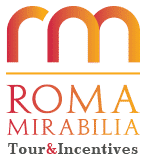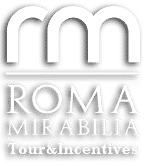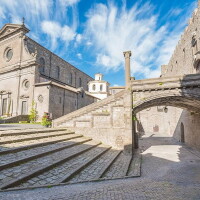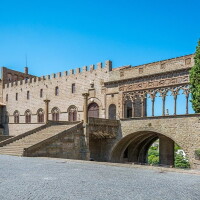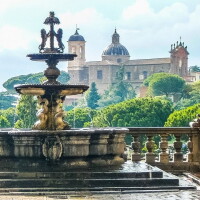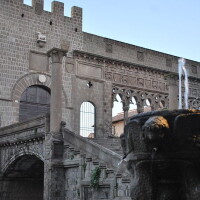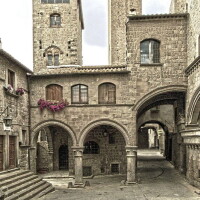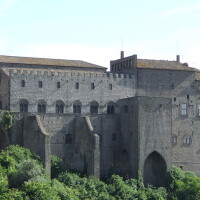Viterbo is situated approx. 100 (60 miles) north of Rome. After the settlement of the Etruscans Viterbo was fortified in the 8th Century by the Lombard King Desiderius in his vain attempt to conquer Rome. When the Popes switched to the Frankish allegiance, Viterbo became part of the Papal States, but this status was to be highly contested by the Emperors in the following centuries, until in 1095 it became known as a free commune. At a time when the Popes had difficulty in asserting their authority over Rome, Viterbo became their favourite residence, beginning with Pope Eugene III (1145-1146) through to Martin IV in 1281. Without the Popes, the city fell into the hands of the Di Vico family who held dominion until 1396. In this year Pope Boniface IX established a firm Papal suzerainty over the city. Henceforth Viterbo became a city of secondary importance, following the vicissitudes of the Papal States and becoming part of Italy in 1871. The old city of Viterbo is still enclosed by powerful walls of lava stone whose construction was begun in 1095 and completed in 1268. The nucleus of Viterbo has maintained its medieval aspect, particularly in the Quarter of Saint Pellegrino, with its palaces and towers from the XIII century. The main attraction in Viterbo is the Papal Palace on the hill with its dome that is a great testimony to gothic architecture. Other important monuments in Viterbo are the Rocca Albornoz, seat of the National Museum); the Cathedral of S. Lorenzo; the Palazzo Comunale, Palazzo del Podestà and Palazzo della Prefettura (rebuilt 1771) in the central square Piazza del Plebiscito; the small Gothic church of Santa Maria della Salute; the Palazzo Farnese where Alessandro Farnese, the future Pope Paulus III, lived in his youth together with his beautiful sister Giulia Farnese; the Romanesque church of San Giovanni in Zoccoli; the Museo Civico (City Museum) that houses many archeological specimens from the pre-historic to Roman times and finally a Pinacoteca (gallery) with paintings by Sebastiano del Piombo, Antoniazzo Romano, Salvator Rosa, Antiveduto Grammatica and others.
